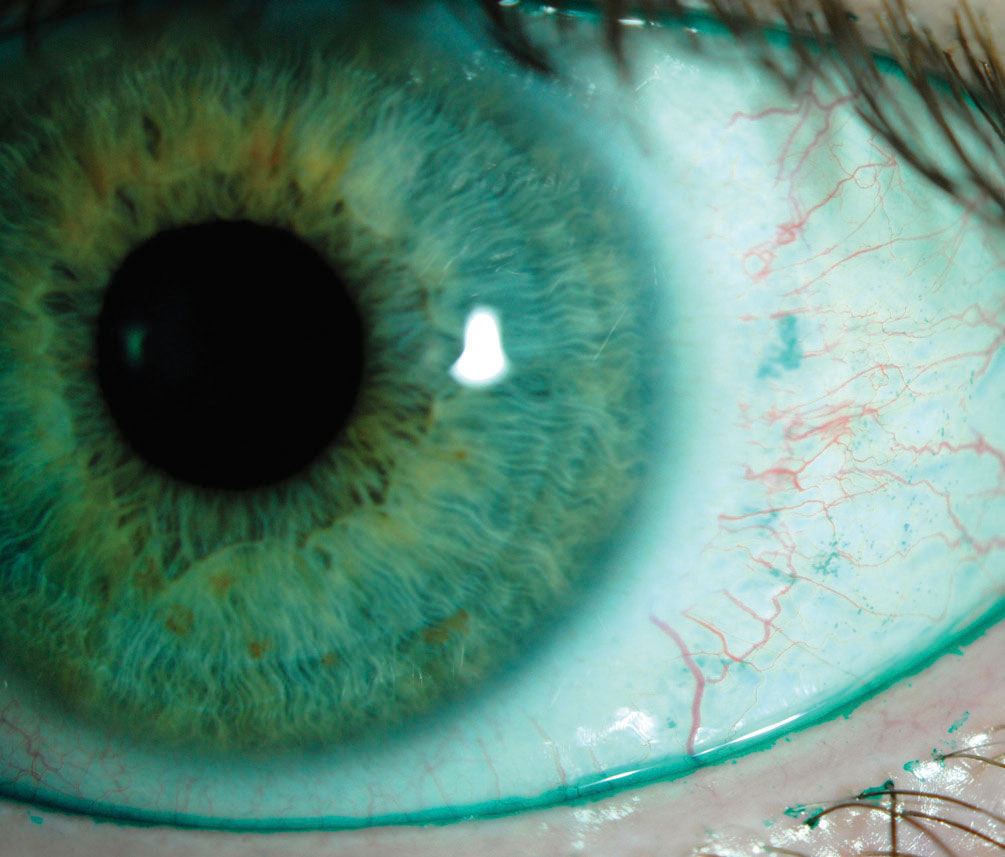 |
| The current generation of SiHy lenses are less disruptive to the ocular surface than older designs, which generated higher rates of conjunctival staining. Photo: Michelle Hessen, OD. Click image to enlarge. |
Since the introduction of silicone hydrogel (SiHy) contact lenses 20 years ago, this modality has undergone significant updates in material and design, as industry worked to improve physiological performance, comfort and convenience for wearers. In a comparison of how this lens has performed through the years, a new study suggests wearers of current designs have similar ocular health profiles as non-contact lens wearers.
Still, SiHy lenses went through some growing pains in the early days, the investigators noted.
“From the available data, it appears that, overall, ocular health findings declined slightly a decade after the release of SiHy lenses but recovered in more recent years to the levels prior to their release, with the exception of limbal redness which has gradually improved over time,” the authors wrote in their paper. “Of note, is the rise and then decline of corneal fluorescein staining levels observed over the past two decades.”
The investigative team from Australia analyzed baseline ocular physiology data from 3,624 individuals in the Brien Holden Vision Institute clinical trial database. They then classified the records into three groups based on the time period:
Group A: roughly less than two decades ago (1997 to 1999, the period just prior to the availability of SiHy lenses)
Group B: one decade ago (2009 to 2014, 10 years after the launch of the SiHy lens)
Group C: recent years (since 2015)
The authors also reviewed physiology data from both neophytes and habitual contact lens wearers, which included any issues of bulbar, limbal and upper palpebral conjunctival redness, corneal and conjunctival staining and conjunctival indentation from contact lenses. They found that the staining levels were similar between the neophytes and contact lens wearers during the A and C timeframes. On the other hand, contact lens wearers had worse staining level outcomes from 2009 to 2014 (B). This staining finding coincides with a rise in literature reports of corneal fluorescein staining shortly after the release of SiHy lenses, the researchers noted.
“The staining was described as diffuse, superficial and punctate, and wearers were generally asymptomatic. The staining was more commonly observed in wearers of contact lenses made of SiHy materials who were wearing their lenses on a daily wear basis and disinfecting them nightly in multipurpose solution,” the authors wrote.
Considering limbal redness, contact lens wearers had a greater prevalence vs. neophytes during time point A. However, at time points B and C, limbal redness cases were about the same between contact lens wearers and neophytes.
“Future developmental efforts in contact lens technology may be usefully directed toward other areas not investigated in this study including the risk of infection, improving comfort, vision and convenience and dealing with aspects such as myopia control and presbyopia,” the authors wrote.
Tahan N, Naduvilath TJ, Woods C, et al. Review of 20 years of soft contact lens wearer ocular physiology data. Cont Lens Anterior Eye. October 19, 2021. [Epub ahead of print]. |

